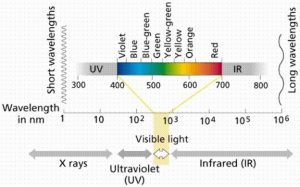This article was originally published in the Fall 2022 edition of the AIM Newspaper. Read the full paper or subscribe to the print edition for free.
Acupuncture for appearance enhancement is one of the fastest growing specialties among acupuncture professionals in the United States. Dating back thousands of years to the Qin Dynasty (221-206 BC), Chinese medical physicians were employed to perform mei rong ( 美 beautiful 容 appearance) treatments on empresses and emperors’ concubines to enhance natural radiance, maintain a youthful and lustrous appearance, and delay signs of aging. The modern application of ancient mei rong, commonly referred to as cosmetic acupuncture or cosmetic facial acupuncture, has become a recognized and desired alternative, or adjunct to, well-established Western beauty-enhancing procedures such as neurotoxins, volumizers, and surgery. In fact, the results of a 2014 NCCAOM survey entitled “Acupuncture Facial Rejuvenation Certification Needs Assessment Survey” revealed that 62% of the patients of the acupuncturist surveyed inquired about acupuncture for improving facial appearance.
As more Chinese medicine graduates and seasoned practitioners incorporate cosmetic facial acupuncture into their practices, for many, maximizing consumer attention is imperative. Improving one’s clinical skills with advanced education is always recommended. Additionally, incorporating ancillary services helps to boost treatment results, promote professional visibility, add monetary value to your service menu, and increase business revenue.
Traditional Techniques in Modern Cosmetic Acupuncture
Facial Gua Sha and Face Cupping
Facial gua sha 刮痧 (gua = to scrape sha = sand-like) and face cupping 拔罐 are simple and effective additions to cosmetic facial acupuncture treatment. Rooted in East Asian medicine and culture, facial gua sha and face cupping stimulate lymph drainage, improve circulation of qi and blood, and nourish underlying tissue. Like Shonishin, rather than raising petechia, facial gua sha and face cupping utilize rhythmic stroking, rubbing, and pressure to produce internal and visible results.
Modern gua sha tools are made of various shades of jade, quartz, citrine, lapis, and other minerals. Minerals have vibratory frequencies that resonate with body energies. When appropriately applied along specific pathways of the face, they engage with internal energy to encourage visible and systemic health. Face cups, originally created from hollowed bones and bamboo, are now commonly made of glass or silicone. When properly suctioned to the skin surface, face cupping also improves exterior and interior health.
Benefits of facial gua sha and face cupping:
- Reduces stagnation by dispersing qi and blood
- Removes cellular waste from the lymphatic system
- Harmonizes tissue fascia and muscles imbalances
- Plumps fine lines and wrinkles
- Relieves tension, and pain
- Expels wind, cold, and/or heat from the skin surface
Facial gua sha and face cupping also have a noted effect on tissue fascia and collagen production. Fascial tissue responds to mechanical stimuli and transmits electrical signals throughout the body. One of the main components of fascia is collagen, which has been shown to have semiconductive, piezoelectric, and photoconductive properties in vitro. These electronic currents within connective tissue and fascia can be altered by external influences such as facial gua sha and face cupping to cause a physiologic response in localized tissue and distal planes (Langevin, 2006).
Are you interested in becoming a certified acupuncture professional?
Visit the links below to explore our specialized acupuncture programs at a campus near you:
Innovative Approaches to Enhance Cosmetic Acupuncture
Microcurrent
As the name implies, microcurrent applied to the face delivers a subsensory micro-amperage (μA) current (that is, 1000 times less than the milli-amperage (mA) of current found in many transcutaneous electrical nerve stimulation (TENS) units, commonly used to treat pain. Unlike the mA of TENS units, the subsensory stimulation of microcurrent mimics the body’s innate low-intensity cellular electrical current to accelerate tissue repair. New to cosmetic facial acupuncture, microcurrent improves cutaneous tissue integrity and promotes underlying muscle re-education.
Low voltage electrical current stimulates collagen and elastin production in the dermal layers of the skin. According to a 1975 study published in the British Journal of Dermatology, dermal collagen content decreases by 1% every year. Microcurrent enhances skin adenosine triphosphate (ATP) production, stimulates collagen and elastin synthesis, replenishes the loss of natural collagen, and re-energizes face muscles to improve face muscle tone.
Benefits of microcurrent:
- Improves cell wall permeability
- Significantly increases ATP
- Improves protein synthesis
- Enhances fibroblasts/collagen activity
- Re-hydrates skin
- Enhances lymph drainage
- Reduces tissue inflammation
- Improves tissue circulation
- Evens skin tone and texture
- Reeducates muscle activity
- Relaxes forehead muscles
- Tightens jowls
- Relaxes neck muscles
- Improves neck tissue
- Lifts and tone cheek and mid- face muscles
- Softens the appearance of fine lines and wrinkles
Microneedling
Rooted as plum blossom in ancient Chinese medicine history, microneedling is used today as a controlled tissue trauma to stimulate growth of healthy tissue collagen and elastin. Commonly referred to as mesorolling, dermarolling, cutaneous induction therapy, or percutaneous collagen induction, micro-sized needles driven into the epidermal and superficial dermal layers of the skin encourage fibroblast activity. Fibroblasts are one of the primary cells present in skin connective tissue. When stimulated, fibroblasts activate white blood cells to repair the microtrauma created by microneedle insertion, enhance Type 1 collagen, promote elastin production, and thicken atrophic skin tissue.
Microneedling improves:
- Wrinkles
- Acne
- Scars
- Cellulite
- Sun-damaged skin
- Pregnancy stretch marks
Current research has led to new innovations for microneedling advancement. According to the work of Singh and Yadav (2016), although traditionally used as a collagen induction therapy for cosmetic purposes, microneedling is now widely used as a transdermal delivery system for therapeutic drugs and vaccines.
Leveraging Light Therapy for Cosmetic Enhancement
LED therapy or photobiomodulation is the application of specific wavelengths of light on to the skin surface for targeted therapeutic advancement. Categorized as low-level light therapy and similar to cold laser, the benefits of LED span across many medical fields.
When placed on the body, LED photons are absorbed through the epidermal and dermal cellular membrane to stimulate mitochondrial activity and accelerate ATP synthesis. Enhanced ATP production encourages a cascade of metabolic events resulting in improved biochemical and cellular function.
LED waves are those on the electromagnetic continuum that are visible to the naked eye. Measured in nanometers, the range of this color spectrum begins as violet and blue at approximately 400-500nm and ends in orange and red at approximately 600-700nm. The therapeutic effect of each wavelength is dependent upon its length and therefore depth of penetration through the skin surface.
Beneficial Effects of Blue Light (470nm):
- Acne (FDA approved): limits deleterious effects of bacteria Propionibacterium (P. acne) which is the root cause of many types of acne.
- Psoriasis, actinic keratosis (AK)
Beneficial Effects of Red Light (640nm):
- Tissue healing (superficial/deep)
- Collagen production
- Skin dyschromia
- Fine lines and wrinkles
- Post laser treatment
Additionally, according to Ablon (2018), LED light may be an effective and safe treatment for squamous cell carcinoma in situ and basal cell carcinoma.
It is no secret that as more and more Chinese medicine graduates and seasoned practitioners incorporate cosmetic facial acupuncture into their practice, the need to maximize consumer attention is essential. Although the primary purpose of our profession is to help heal and maintain the health of our patients, we are still business owners with salaries, taxes, and operating expenses to pay. Offering ancillary services not only boosts treatment results; it also promote professional visibility, adds monetary value to your service menu, and improves the profits of a practice.
REFERENCES
Ablon G. (2018). Phototherapy with Light Emitting Diodes: Treating a Broad Range of Medical and Aesthetic Conditions in Dermatology. The Journal of clinical and aesthetic dermatology, 11(2), 21–27.
Andrew C. Ahn, Alan J. Grodzinsky, Relevance of collagen piezoelectricity to “Wolff’s Law”: A critical review, Medical Engineering & Physics, Volume 31, Issue 7, 2009, Pages 733-741,
Bordoni, B., & Simonelli, M. (2018). The Awareness of the Fascial System. Cureus, 10(10), e3397.
Langevin HM. Connective tissue: a body-wide signaling network? Med Hypotheses. 2006;66(6):1074-7. doi: 10.1016/j.mehy.2005.12.032. Epub 2006 Feb 17. PMID: 16483726.
Shuster S, Black MM, McVitie E. The influence of age and sex on skin thickness, skin collagen and density. Br J Dermatol. 1975 Dec;93(6):639-43. doi: 10.1111/j.1365-2133.1975.tb05113.x. PMID: 1220811.
Singh, A., & Yadav, S. (2016). Microneedling: Advances and widening horizons. Indian dermatology online journal, 7(4), 244–254.
WEBSITES
https://www.pacificcollege.edu/news/blog/2014/09/24/shonishin-pediatric-acupuncture
More information about Pacific College’s Cosmetic Acupuncture program
Featured Posts:



